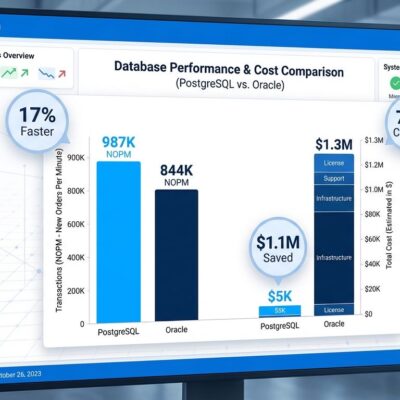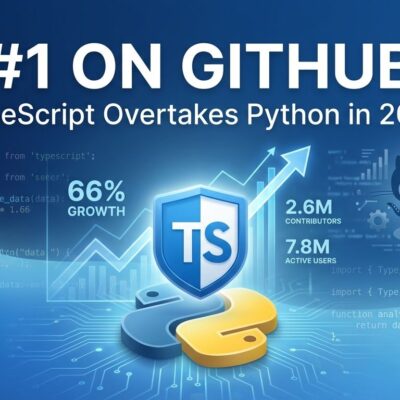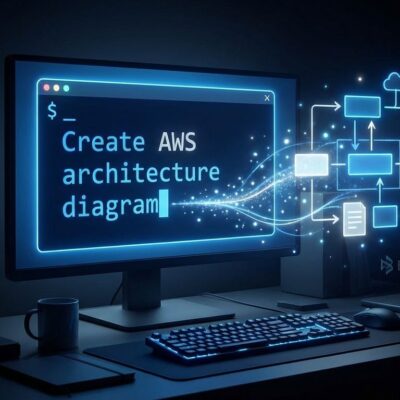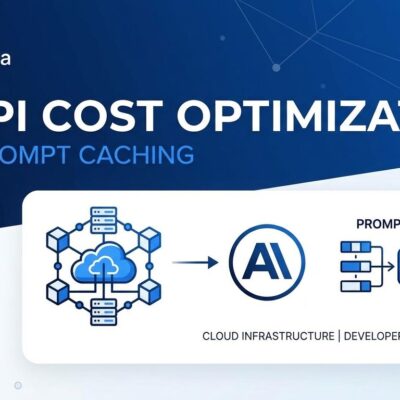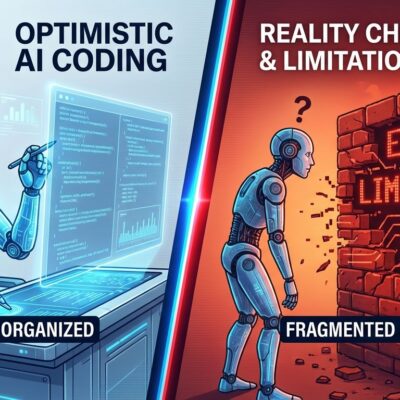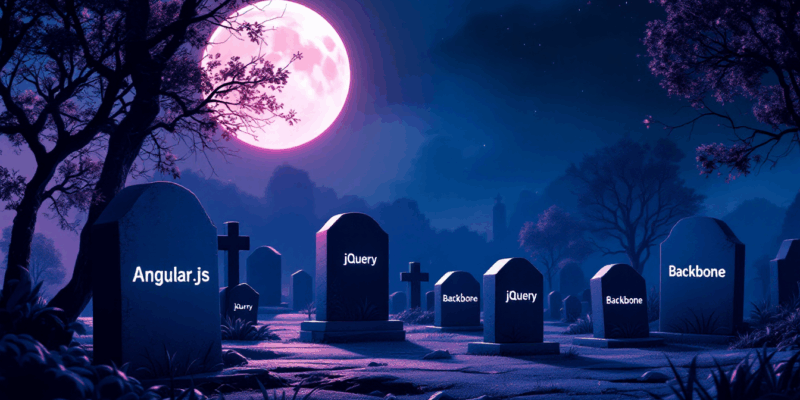
Angular.js officially died in 2022 after 12 years. jQuery fell from powering 70% of all websites to “legacy tech nobody uses for new projects.” Backbone.js went from running Airbnb and Hulu to a footnote in framework history—all in just five years.
Welcome to “Dead Framework Theory”: the inevitable lifecycle that explains why your tech stack keeps dying, and why that’s not actually a problem.
Every Framework Follows the Same Pattern
Framework death isn’t random. It follows a predictable five-stage lifecycle: Birth (0-1 year), Growth (1-3 years), Maturity (3-7 years), Decline (5-10 years), and Death (10+ years). The timelines vary wildly—jQuery lasted 15+ years while Backbone barely made it to five—but the pattern holds.
React, currently dominant at 40% market share, is 12 years old and showing signs of vulnerability. The question isn’t if it will decline, but when. Even market leaders aren’t immortal.
Why Frameworks Die
Three forces kill frameworks, and understanding them helps you evaluate what you’re betting on today.
Corporate abandonment strikes first. Google’s Angular.js rewrite fragmented the community. Meta’s shifting priorities raise questions about React’s future. When companies treat frameworks as side projects instead of core products, death follows.
Better alternatives emerge. React’s virtual DOM didn’t just compete with Backbone—it made Backbone’s approach obsolete overnight. Tailwind didn’t improve Bootstrap; it replaced the entire mental model. Innovation doesn’t iterate; it disrupts.
Over-engineering accelerates decline. Angular’s complexity drove developers to simpler alternatives. Redux boilerplate spawned an entire ecosystem of lighter state management solutions. When frameworks grow too complex, developers flee to whatever promises simplicity—even if it’s just another framework that will eventually suffer the same fate.
The Developer’s Impossible Choice
This creates a paradox every developer faces: adopt new frameworks too early and you get instability, incomplete ecosystems, and wasted effort when they die. Wait too long and you’re stuck with legacy code, hiring problems, and security vulnerabilities nobody’s patching.
Over-invest in mastering one framework and your skills become obsolete. Constantly chase new ones and you get “framework fatigue”—the exhaustion of running in place while your resume requires constant updating.
The goal isn’t to avoid churn. You can’t. The goal is to manage it strategically.
Framework Death is Good, Actually
Here’s the contrarian take: framework death isn’t a bug in the system. It’s a feature.
jQuery’s death forced browsers to improve. Native APIs like querySelector, fetch, and classList exist because jQuery proved developers needed them. Framework death prevents vendor lock-in—no single tool can monopolize the ecosystem. It’s natural selection. Bad ideas die. Good ideas persist and evolve.
Dan Abramov, React core team member, said it best: “Frameworks are temporary solutions to permanent problems. The best frameworks make themselves obsolete by teaching the platform what developers need.”
Framework churn isn’t something to solve. It’s creative destruction keeping the industry from stagnating.
How to Choose Frameworks That Last
You can’t avoid framework death, but you can make smarter bets. Evaluate frameworks on four criteria:
Community health: Check GitHub activity, npm download trends, conference presence, and job market demand. Growing communities sustain frameworks. Declining ones signal trouble.
Corporate backing: Is there a sponsor? Do they use it internally or just fund it? Facebook uses React in production. Google rebuilt Angular.js because the old version couldn’t scale. Internal usage matters more than marketing.
Migration path: Can you adopt incrementally? React’s gradual evolution (16→17→18) kept developers on board. Angular’s breaking rewrite fragmented the community. Plan for how you’ll get out before you commit.
Boring technology principle: Use proven tech for production. Experiment on side projects. Apply the “Two-Year Rule”—wait two years after a framework’s 1.0 release before betting your business on it. Let others battle-test the sharp edges.
Plan for Obsolescence From Day One
The frameworks you choose today will die. That’s not pessimism—it’s pattern recognition. React, Vue, Svelte, whatever comes next—all temporary.
Build for it. Keep business logic separate from framework code. Learn transferable concepts like component architecture and state management patterns, not just framework-specific APIs. Track maintainers on GitHub—when they move to new projects, framework death often follows.
Rich Harris, Svelte’s creator, nailed it: “React won because it had a better mental model, not because it was faster. The next dominant framework will win for the same reason.”
The next “better mental model” is coming. Embrace the churn.



